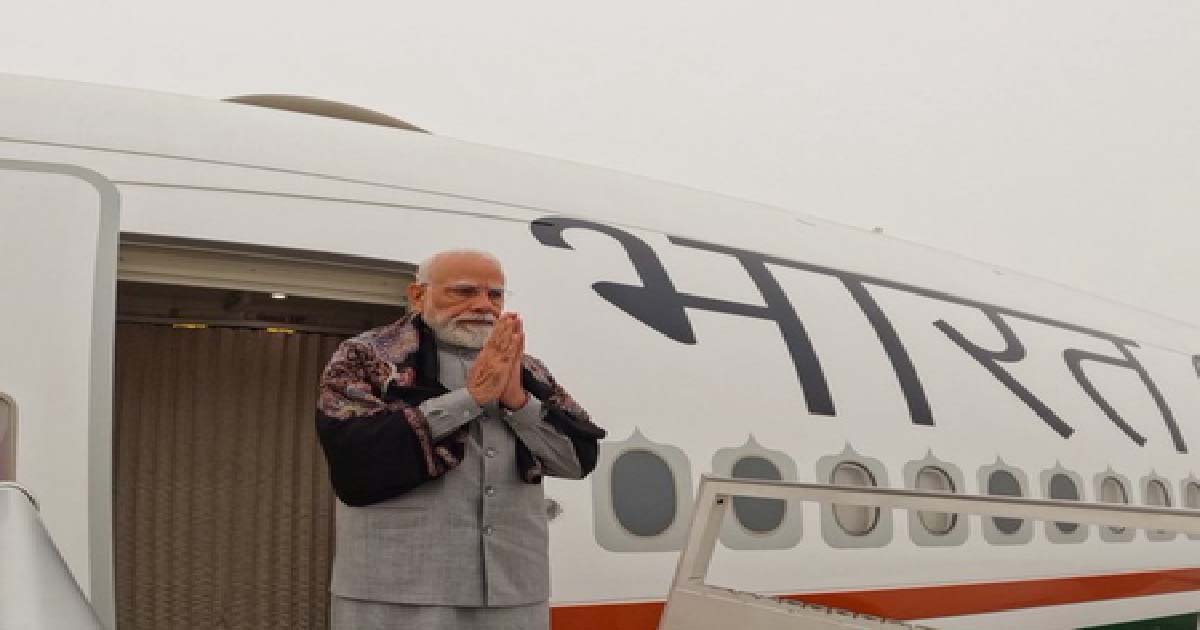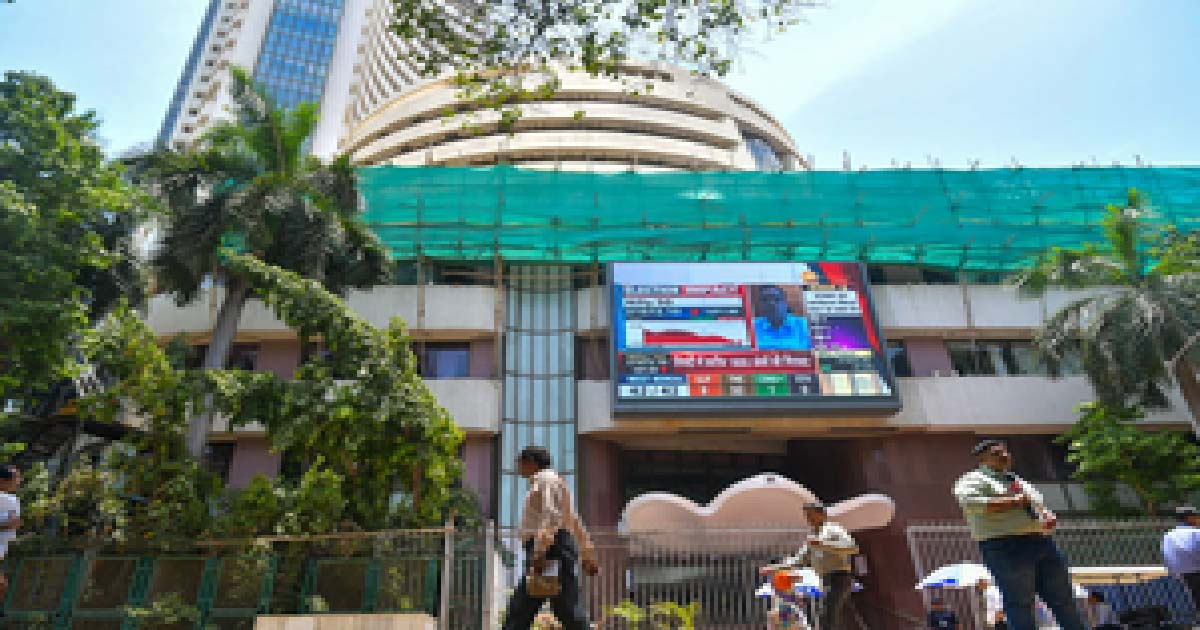Business
World Economic Forum: India participates with record delegation
To mark its presence robustly at the just-concluded World Economic Forums (WEF) annual meeting this year, India had sent a record delegation this year led by Indian Commerce and Industry Minister Piyush Goyal.
The meeting took place in Davos from May 23-25.
This year coincides with the World Economic Forum’s 50th anniversary and 35 years of the Forum’s collaboration with India.
Speaking at the WEF, Goyal said, even as challenges continue to remain on economic front, the government is conscious to move forward and is aware of what to focus on. He said there is a lot of optimism globally regarding India.
Goyal also expressed concern over “excessive dependence” on international supply chains and asked businesses to procure locally “whenever there is an opportunity”.
He also mentioned that India has no plans to immediately lift ban on wheat export. India is now the second largest wheat producer in the whole world. But it had put a ban on private overseas sales as output was hit due to heat wave and domestic price hit a record high.
Nearly 100 participants and dozens of political leaders from India attended the World Economic Forum, and presented the country’s position on the energy situation, food security and health equity at Davos.
In line with the Centre’s priorities, sessions were organised at the India Lounge keeping in mind India’s strategic advantage, existing and upcoming incentive architecture, industry investment potential and market opportunity.
The key topics which were discussed during the sessions include policy and ease of doing business reforms, energy transition, digital economy, opportunities in National Monetization Pipeline, India as an entrepreneurial destination shaping the unicorn story, growing talents in the digital space, emphasis on innovation and research in the healthcare ecosystem.
Attendance from China, Japan and South Korea was sparse this year, mentioned Indian industrialist Gautam Adani, Chairman of Adani Group.
It was an opportune forum for India as European business leaders were eagerly scouting options for diversifying trade and investments. Thanks to its political stability and reformist policies, India seemed to have appeared to be the best option for most of them.
Many global investors endorsed India’s rising economic relevance. For example, Saint Gobain Global CEO Benoit Bazin said that the company plans to invest over Rs 5,500 crore in the next four years in India. Bazin was bullish about the 45-billion-euro company’s growth story in India.
David Rubenstein, co-founder of the private equity Carlyle Group, told reporters in Davos that “India has been more attractive (to buy assets) of late than China”. Clearly, India benefitted from the absence of China and concerns over its heavy-handed �zero Covid’ strategy.
Goyal said that every Indian diplomatic mission had been given the responsibility of supporting Indian industry. “Every mission, every office, every official is now ready to stand for Indian businesses and that is what will spearhead Trade 4.0,” he said.
Ministers from several state governments, including Tamil Nadu, Maharashtra, Telangana, Andhra Pradesh and Madhya Pradesh, were also in Davos to attract global investors.
Andhra Pradesh reportedly signed renewables investment pacts cumulatively worth about Rs 1,600 crore with three companies. The investment commitments were made with India’s Adani Green Energy, GIC-backed Greenko and India’s Aurobindo Realty & Infrastructure.
The Maharashtra delegation reportedly signed at least 23 MoUs worth Rs 30,000 crore. Of these investments, more than 55 per cent are by way of FDI from the US, Singapore, Indonesia and Japan.
Indian delegation also included unicorn founders such as Zerodha’s Nikhil Kamath, EaseMyTrip’s Prashant Pitti, Ashish Singhal of Coinswitch, and Vidit Atrey of Meesho.
Business
Centre releases over Rs 260 crore for rural local bodies in Kerala

New Delhi, Dec 15: The government on Monday said it has released Rs 260.20 crore to rural local bodies in Kerala as part of the 15th Finance Commission grants for the financial year 2025-26.
The amount represents the first instalment of untied grants and covers all 14 district panchayats, 152 block panchayats and 9,414 gram panchayats (GPs) in the state, according to an official statement.
Untied grants are meant to be utilised by rural local bodies/PRIs for location-specific felt needs under the 29 subjects listed in the Eleventh Schedule of the Constitution, except for salaries and other establishment expenditures.
Tied Grants, on the other hand, are earmarked for basic services relating to sanitation and maintenance of ODF (open defecation-free) status, including management and treatment of household waste, human excreta and faecal sludge, and supply of drinking water, rainwater harvesting, and water recycling.
Last week, the government released Rs 717.17 crore to strengthen rural local bodies in Maharashtra as part of the first instalment of untied grants for the financial year 2025-26. The funds were released to duly elected and eligible rural local bodies in the state, covering two district panchayats (Zilla Parishads), 15 block panchayats (panchayat samitis), and 26,544 gram panchayats.
The government, through the Ministry of Panchayati Raj and the Ministry of Jal Shakti (Department of Drinking Water and Sanitation), recommends release of 15th Finance Commission grants to states for Panchayati Raj Institutions, which are then released by the Ministry of Finance.
The allocated grants are recommended and released in two instalments in a financial year.
Earlier in November this year, the Centre released over Rs 223 crore for rural local bodies in Assam and another Rs 444.38 crore to strengthen panchayat bodies in Odisha as part of the 15th Finance Commission grants.
Business
PM Modi’s 3-nation visit to further bolster trade and investment ties

New Delhi, Dec 15: As Prime Minister Narendra Modi embarked on a three-nation visit to Jordan, Ethiopia and Oman on Monday, bolstering economic and trade ties is among the key agenda items of his visit.
PM Modi’s visit is expected to open far-reaching opportunities to enhance the country’s economic footprint across West Asia and Africa.
Last week, the Union Cabinet, chaired by the Prime Minister, approved the proposed Free Trade Agreement (FTA) between India and Oman, aimed at deepening trade and investment relations between the two countries.
The approval also came after Oman’s Shura Council approved the Gulf nation’s proposed FTA with India. The talks for the trade agreement, officially termed the Comprehensive Economic Partnership Agreement (CEPA), formally began in November 2023.
India and Oman share a long-standing and multidimensional Strategic Partnership supported by strong trade ties, energy cooperation and cultural linkages. The economic and commercial relations between India and Oman are robust and buoyant.
The bilateral trade between the two nations reached $8.947 billion during FY 2023-2024, and for FY 2024-25, it stood at $10.613 billion, according to an official statement. Bilateral investment flows have also been strong, as reflected in numerous joint ventures established both in India and Oman.
Moreover, there are over 6,000 India-Oman joint ventures present in Oman, estimated to be adding $7.5 billion to Oman’s economy in the form of total capital investment over a long period.
PM Modi will hold high-level talks with the Sultan of Oman in Muscat and discuss strengthening the Strategic Partnership as well as the strong commercial and economic relationship between the two nations.
Notably, India is Jordan’s third-largest partner, with bilateral trade at around $2.8 billion. Jordan is a key supplier of fertilisers to India, particularly phosphates and potash.
Although the size of India-Ethiopia bilateral trade was around $550 million in FY25, India was the second largest trading partner for the African nation. India’s key exports include primary and semi-finished iron and steel products, drugs and pharmaceuticals, fertilisers and machinery, among others.
Business
Indian stock market ends in bullish tone over hopes of renewed FII inflows

Mumbai, Dec 13: Indian equity benchmarks made marginal losses during the week amid sustained FII outflows and uncertainty surrounding the US-India trade negotiations.
However, the market ended the week in a bullish tone with Nifty surging 0.57 per cent on the last trading day after the US Federal Reserve announced a 25-bps rate cut.
Benchmark indices Nifty and Sensex dipped 0.36 and 0.17 per cent during the week to close at 26,046 and 85,267, respectively.
Indian equities opened the week on a subdued note, amid continued rupee depreciation and negative global cues due to rising Japanese bond yields.
The US Fed rate cut later in the week eased liquidity concerns and fuelled hopes of renewed FII inflows. With supportive central bank policies, steady domestic investments, and optimism over trade progress despite unclear timelines, benchmarks closed the week on a strong note.
India’s year-on-year inflation rate based on the Consumer Price Index (CPI) was estimated at 0.71 per cent for November this year which was marginally higher than the 0.25 per cent in October, according to figures released by the Ministry of Statistics.
Broader indices underperformed, with the Nifty Midcap100 and Smallcap100 down 0.51 per cent and 0.67 per cent, respectively, in a week.
Sectoral performance was mixed, with IT under pressure while PSU banks, real estate and consumer durables witnessed selective buying.
Hrishikesh Yedve, AVP Technical and Derivative Research, Asit C. Mehta Investment Interrmediates, said that Nifty’s weekly chart shows buying interest at lower levels.
Nifty has 26,200 and 26,325 as stiff resistance levels while 25,700 will act as support zone, he added.
Analysts said that markets will likely remain positive in near future but sensitive to rupee stability, FII flow trends, trade agreement clarity, and cues from major central banks abroad.
Amidst risks from currency fluctuations and global trade uncertainties, improving earnings visibility and liquidity support provide a constructive backdrop and downside protection, they added.
-

 Crime3 years ago
Crime3 years agoClass 10 student jumps to death in Jaipur
-

 Maharashtra1 year ago
Maharashtra1 year agoMumbai Local Train Update: Central Railway’s New Timetable Comes Into Effect; Check Full List Of Revised Timings & Stations
-

 Maharashtra1 year ago
Maharashtra1 year agoMumbai To Go Toll-Free Tonight! Maharashtra Govt Announces Complete Toll Waiver For Light Motor Vehicles At All 5 Entry Points Of City
-

 Maharashtra1 year ago
Maharashtra1 year agoFalse photo of Imtiaz Jaleel’s rally, exposing the fooling conspiracy
-

 National News1 year ago
National News1 year agoMinistry of Railways rolls out Special Drive 4.0 with focus on digitisation, cleanliness, inclusiveness and grievance redressal
-

 Maharashtra1 year ago
Maharashtra1 year agoMaharashtra Elections 2024: Mumbai Metro & BEST Services Extended Till Midnight On Voting Day
-

 National News1 year ago
National News1 year agoJ&K: 4 Jawans Killed, 28 Injured After Bus Carrying BSF Personnel For Poll Duty Falls Into Gorge In Budgam; Terrifying Visuals Surface
-

 Crime1 year ago
Crime1 year agoBaba Siddique Murder: Mumbai Police Unable To Get Lawrence Bishnoi Custody Due To Home Ministry Order, Says Report


















